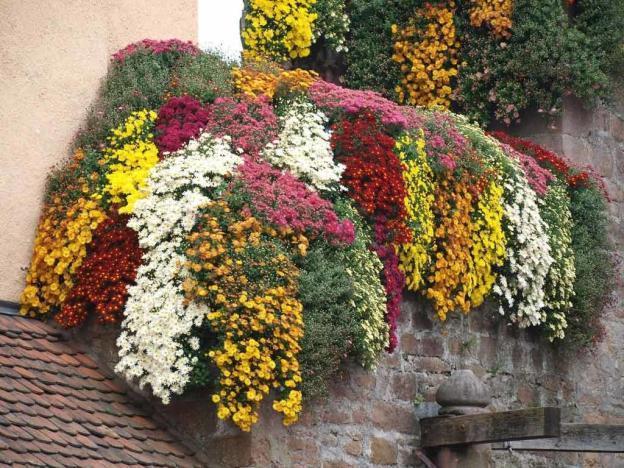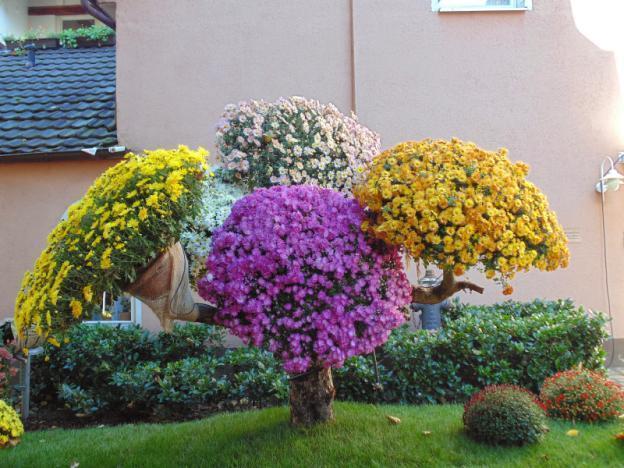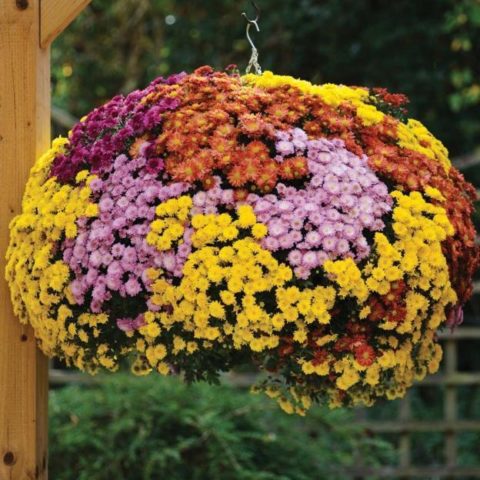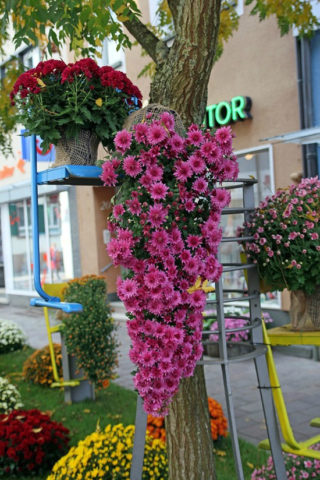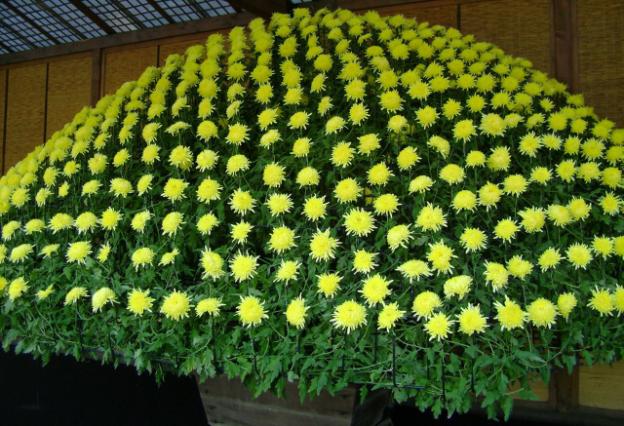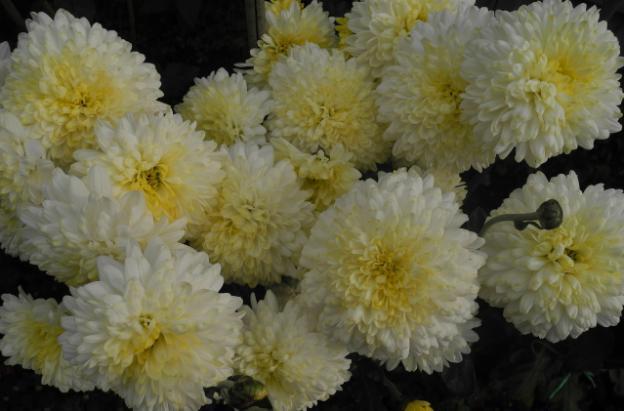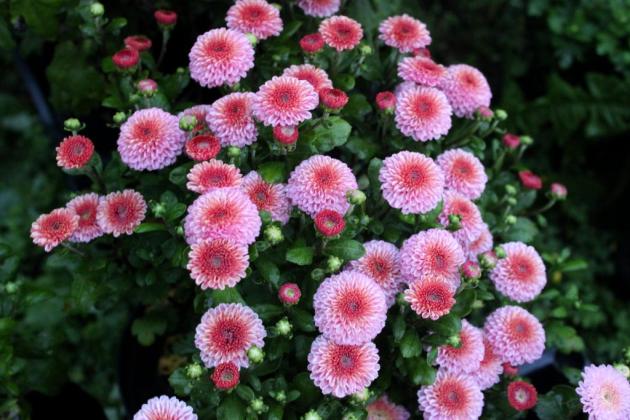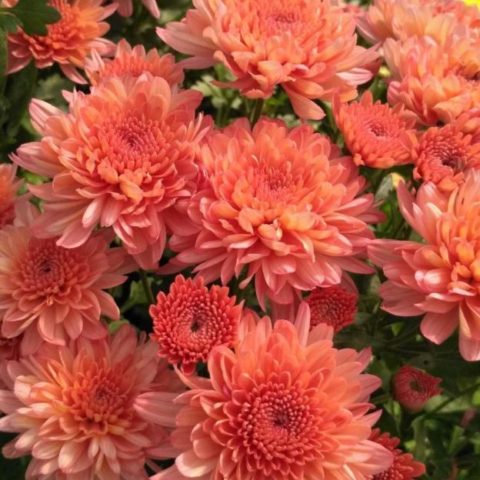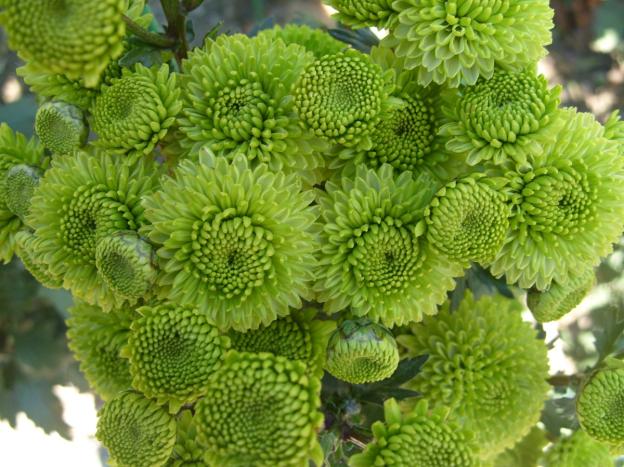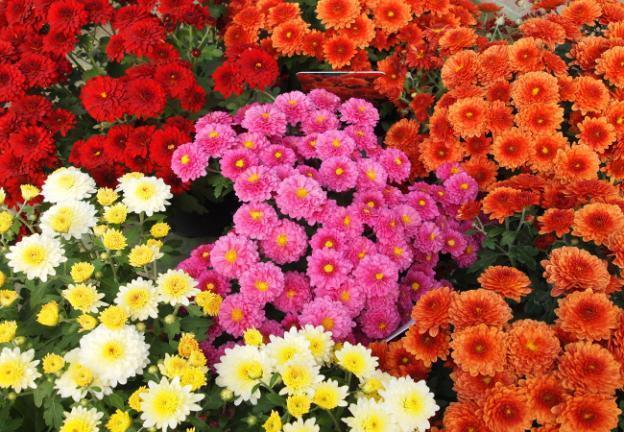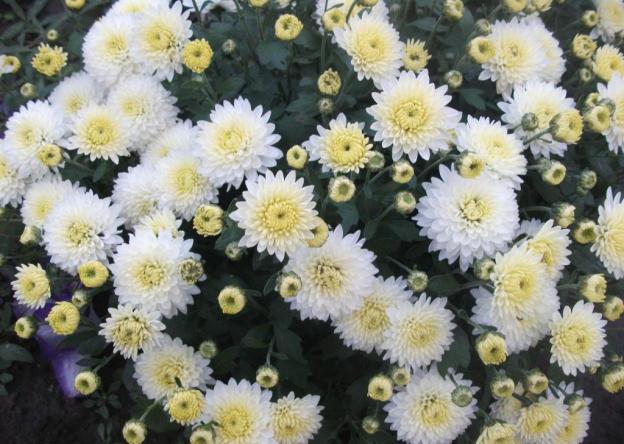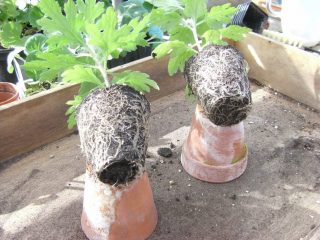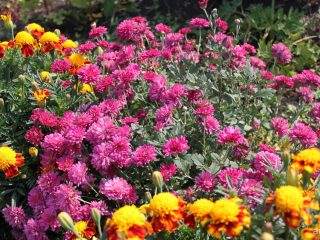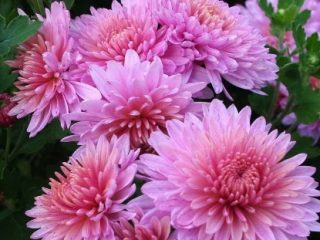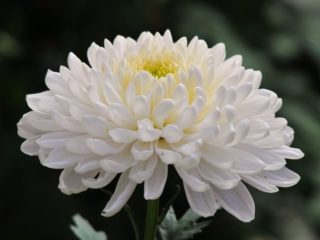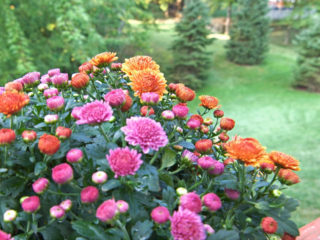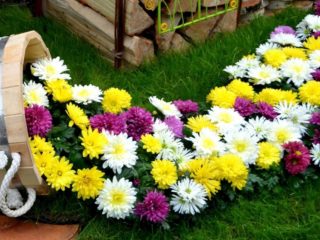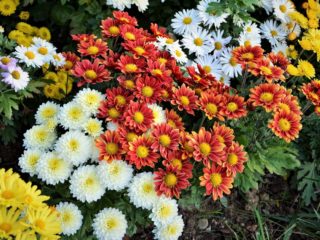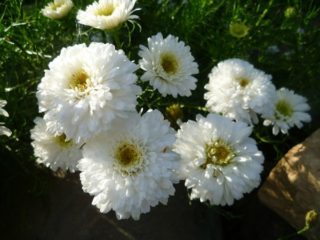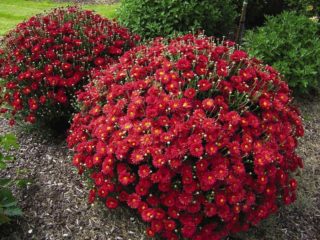Content
- 1 Description of cascading chrysanthemums
- 2 Ampelous chrysanthemums in landscape design
- 3 Varieties of cascading chrysanthemums
- 4 Growing and caring for hanging chrysanthemums
- 5 How to form a cascading chrysanthemum
- 6 Reproduction of cascading chrysanthemums
- 7 Diseases and pests of cascading chrysanthemums
- 8 Photos of hanging chrysanthemums
- 9 Conclusion
Chrysanthemum is a perennial plant that blooms in autumn. The crop is used in ornamental gardening or for commercial cutting purposes. Ampelous chrysanthemum is rare in Russia. This variety is grown for vertical gardening and as a ground cover.
Description of cascading chrysanthemums
Varieties of hanging cascading chrysanthemums come from Japan.
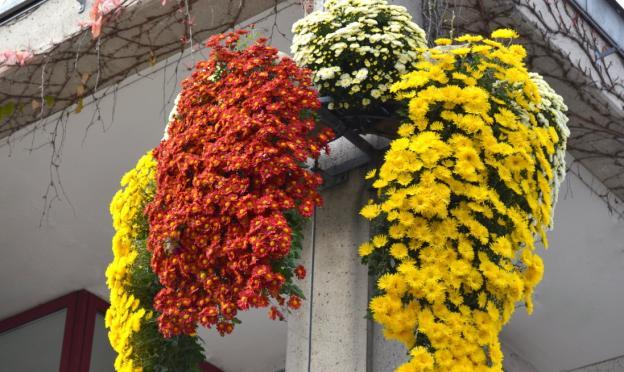
In the land of the rising sun, an unusual style of bush formation is called kengai.
Chrysanthemums with long thin stems and small flowers with a diameter of 1.5-7 cm are created for vertical gardening; they can be simple double or anemone-shaped in shape. The colors of the flowers are varied. They come in yellow, red, white, and blue, which allows you to create colorful cascading compositions. Kengai is quite common and popular in European countries.There, chrysanthemum is used as an hanging plant for decorating balconies.
In Russia in the last century, hanging chrysanthemums were grown only in botanical gardens. We used several varieties adapted to the weather conditions of the Central Belt. Over time, varieties of the crop appeared on the open market. They are used for growing in pots and in open ground.
To get a cascade option, direct the stems down at any angle that matches the design idea. If you do not use the cascade formation technique, the stems grow upward, and the bush will not differ from ordinary chrysanthemums. The composition will require special supports or frames of various shapes to which the shoots are fixed.
Ampelous chrysanthemums in landscape design
Chrysanthemums are grown in flower pots and compositions of different colors are created. The stems are thin and flexible and can reach a length of 120 cm; ampelous varieties are specially bred to create cascading varieties; the flowers completely cover the plant; 100 or more inflorescences are formed on one bush. The culture is used to decorate summer verandas, balconies, and special frames are used on the site or in gardens.
The variety is suitable for open areas; it is planted to decorate rock gardens and rockeries. The stems are fixed to the soil surface in a vertical position, at different levels, resulting in a ground cover, cascading version.
Several design ideas using hanging chrysanthemums:
- for decorating a brick fence or building ledge;
- to create a Japanese-style design;
- grown in hanging pots to decorate any area of the garden plot;
- to decorate urban areas, pots are installed on special frames;
- grown in containers with a trellis installed.
Varieties of cascading chrysanthemums
Varieties of cascading chrysanthemums differ in the length of the stems, flower shape and color. Agricultural technology and methods of crown formation are the same for all varieties. The flowering period also coincides. All representatives bloom in September or early October.
To choose a suitable variety for landscaping, you need to familiarize yourself with its characteristics and requirements for agricultural technology.
Jaune
The cascade perennial variety has good cold resistance; the flowers do not fall off when the temperature drops to -5 0C. The stems are thin, 70-80 cm long, the flowers are yellow with an orange core.
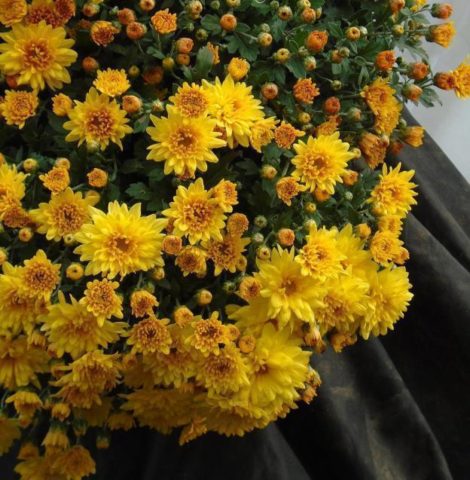
The flowers of the Jaune variety are semi-double, diameter – 6 cm
Contes de Secours
Contes de Secours is a perennial hanging chrysanthemum that belongs to the elite varieties. The length of the stems is more than 120 cm, the foliage and arrangement of inflorescences is dense. The flowers are spherical, dense, white or light cream.
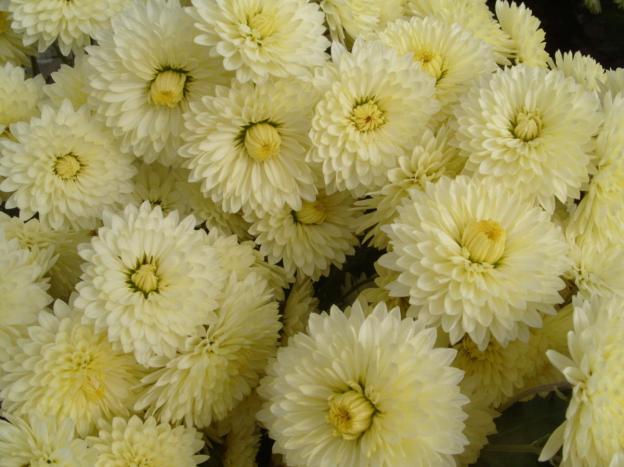
The diameter of the flowers of Contes de Secours is 3.5 cm
Meteor Rain
Meteor shower is an annual miniature plant suitable for growing in a hanging pot. The length of the stems does not exceed 20 cm, the diameter of the flowers is 2.0 cm. This variety is propagated by seedlings.
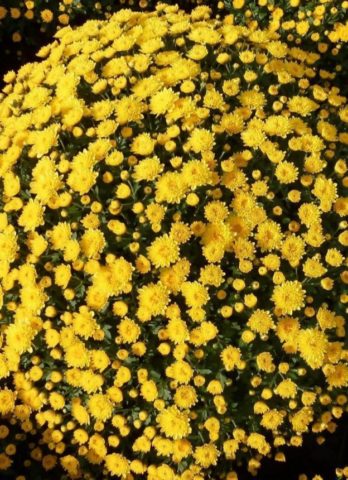
Meteor shower is distinguished by bright lemon semi-double flowers
Aurora
Aurora is a variety of Korean chrysanthemum. This is a perennial plant with stems up to 70 cm long. It is grown as an hanging crop. The characteristics indicate low frost resistance, so for the winter the container is brought into a heated room.
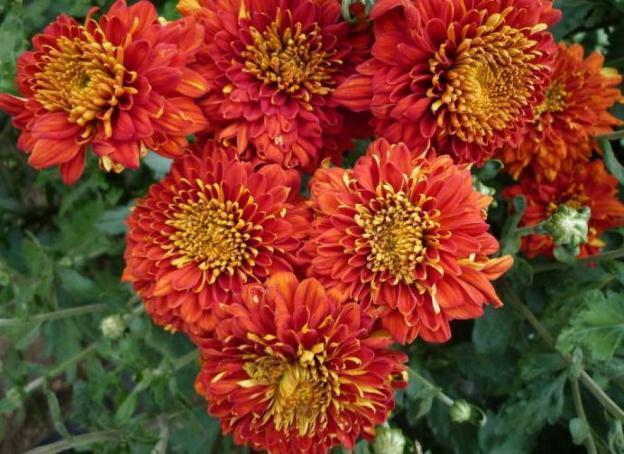
Aurora's flowers are large - up to 8 cm in diameter, double, dark pink with an orange core
Livingston
Perennial frost-resistant crop for open ground. The length of the stems is 1 m or more. The bush is dense, characterized by intensive formation of inflorescences.
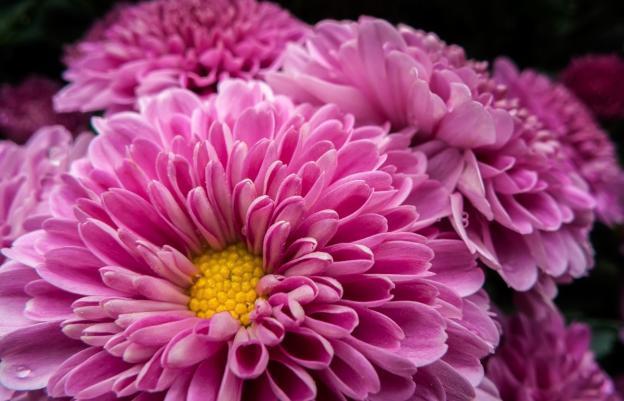
The Livingstone variety has semi-double flowers, with tubular pink petals, their diameter is 6 cm
Natalie
A medium-sized plant with thin, flexible stems 80 cm high. Suitable for open ground. The flowers are semi-double, purple, 5 cm in diameter.
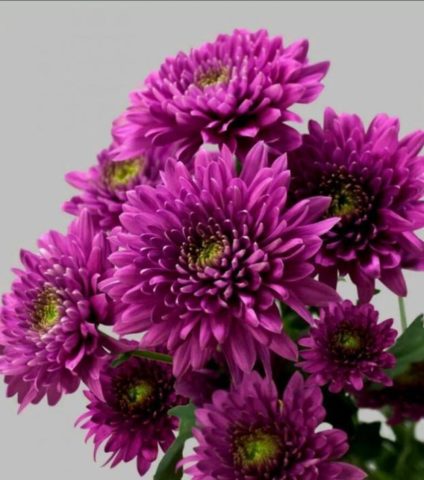
Natalie's frost resistance is average, the crop needs shelter for the winter
Etude
The variety is not widespread, universal. It can be grown in pots and in open ground, but is more often used to decorate rock gardens and included in a cascade composition with other varieties. The stems reach a length of 60 cm, foliage and abundance of flowering are average.
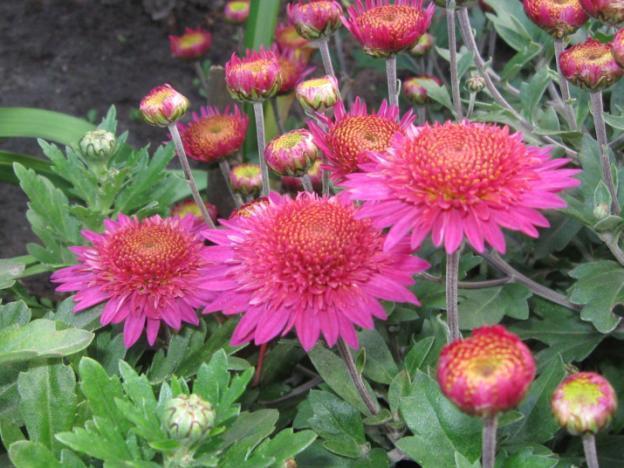
The flowers are dark pink, anemone-shaped, diameter 5 cm
Vanilla
A small-flowered variety with numerous thin stems and intense foliage. Grown as a hanging plant to create cascading structures. Stems are 55 cm long, flowers are 1.5 cm. The color can be white, light pink or cream.
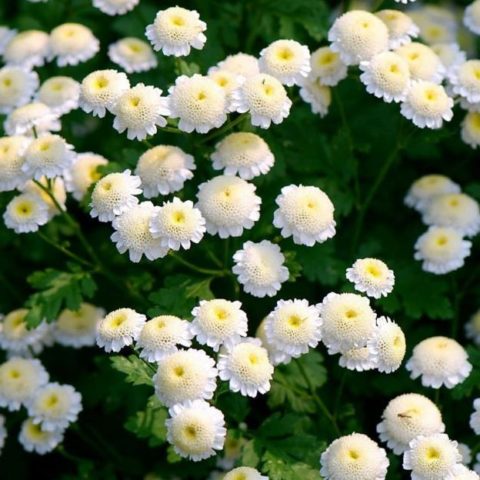
Vanilla has anemone-shaped flowers with a tubular core
Growing and caring for hanging chrysanthemums
Chrysanthemum is a demanding plant not only in terms of soil, but also in subsequent care. Growing an ampelous plant is possible only if a number of conditions are met.
Selection and preparation of a landing site
Chrysanthemum is a light-loving crop; lack of lighting will affect the density of the bush and the intensity of budding; in the shade, the color of dark flowers will fade.The plant does not tolerate exposure to the north wind, so select an area protected from drafts. The culture prefers loamy soil rich in organic matter.
To plant on the site, the soil is dug up, compost, sand, nitrophoska and wood ash are added.
Landing rules
Planting work is carried out at the end of May, when there is no threat of return frosts:
- Make a hole 30 cm deep, cover the bottom with a drainage cushion (the requirements are the same for open ground and flowerpots).
- Place the seedling vertically and cover it with soil.
- Water generously. On the site, the root circle can be covered with peat.
- In cascade options, the distance from the plants is maintained at approximately 30 cm.
The pots with seedlings are placed in a shaded place, and the chrysanthemum is covered with a cloth until rooting.
3 cuttings of different flower colors are planted in a container to create a composition.
Watering and fertilizing
Ampelous chrysanthemum does not tolerate moisture deficiency; with irregular watering, the stems become fragile and woody, which complicates the horizontal formation of the bush. Moisten the soil regularly, especially in hot weather. Water only at the root; water should not be allowed to enter the above-ground part, especially during the period of budding and flowering.
Fertilizing is a mandatory condition of agricultural technology; it is carried out according to the following schedule:
- Before budding. In order for the plant to gain green mass well, urea and nitrophoska are added.
- During the formation of buds (in August). Feed with “Agricola for flowering plants”, superphosphate.
- At the peak of flowering, fertilize with potassium sulfate.
How to form a cascading chrysanthemum
To obtain a lush crown, the formation of an ampelous chrysanthemum begins immediately after placement in the soil:
- Leave 6 leaves on the bottom of the cutting and break off the top.
- After 3 weeks, side shoots will appear from the leaf axils. The top ones are not touched, but the bottom ones are pinched to the fourth leaf.
- Until flowering, all lateral shoots are constantly shortened by 2 leaves.
- Near the bush, slats are stuck on both sides, maintaining a distance of 1 m between them. The height of the plank on the south side is 20 cm, on the north side - 50 cm. Another rail is fixed between them at an angle of 45°, the lower lowered part should be on the south side.
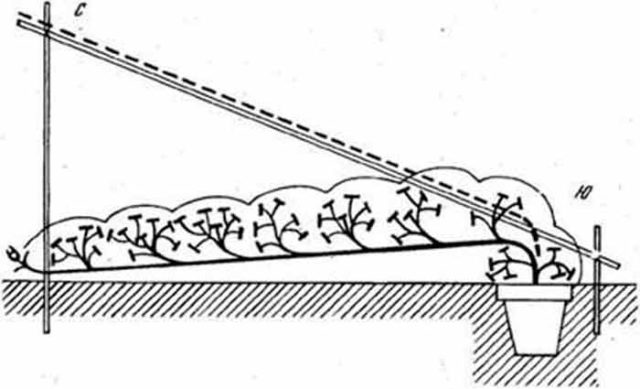
As the stems grow, they are fixed to a horizontal support and the degree of angle is gradually reduced
When the shoots begin to droop, you need to tie a weight to them or place the flower pot on a frame with devices for further fixation. If the cascade is formed in open ground, the initial principle is the same, then the stems must be secured with long, thin staples. In autumn, the branches are shortened to 20 cm.
Reproduction of cascading chrysanthemums
Some ampelous annual varieties are propagated generatively. Seeds are sown for seedlings in March, the seedlings are planted and planted on the site in the spring. Most often, small-flowered perennial varieties are propagated vegetatively. Cuttings 12-15 cm long are prepared in spring or summer; they are cut from the side shoots of old stems. Placed in boxes with fertile substrate and stored at a temperature of +14 0C, in the spring they are determined to a permanent place. The method of dividing the mother bush can be used at any time during the growing season.
Diseases and pests of cascading chrysanthemums
Ampelous varieties resist infection well.Chrysanthemums are threatened by downy mildew and gray mold.
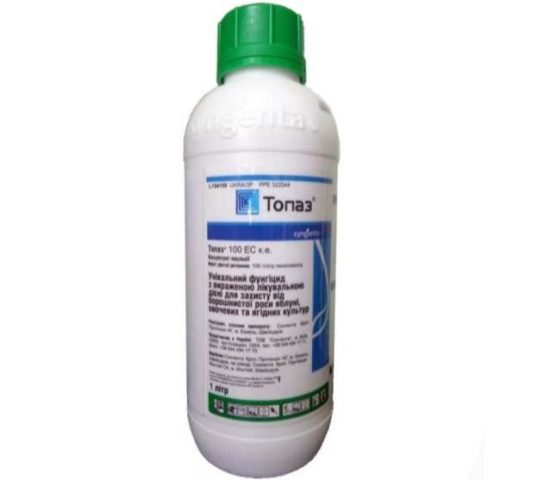
Fungal infection of chrysanthemums is eliminated with Topaz
Solution consumption – 1 liter per 10 sq. m, concentration – 40 ml of the drug per 10 liters of water.
They parasitize on crops:
- slugs;
- earwigs;
- mining moths;
- aphid.
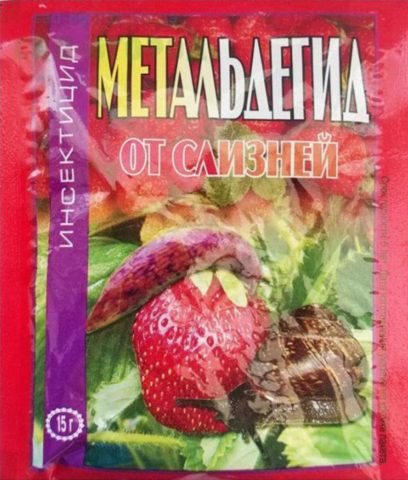
Get rid of slugs with Metaldehyde
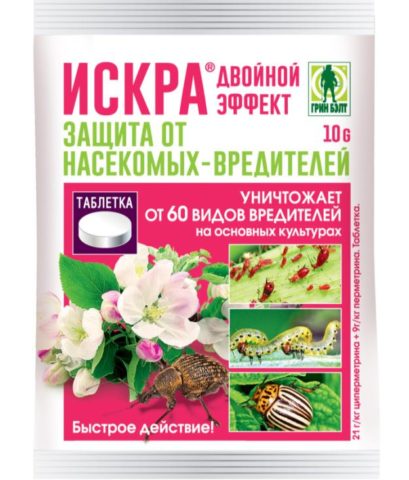
“Iskra” is used against insects and their larvae
Photos of hanging chrysanthemums
Several hanging chrysanthemums that can be used to create a cascade, both in flower pots and in an open area:
- Ellen White – an ampelous variety with long shoots and densely spaced buds;
- Dustin Pink – one of the most common ampelous representatives of culture;
- Branchil cherry – an ampelous variety widely known in Italy, but considered rare in Russia;
- Branbeach Lilac – an ampelous variety, characterized by pink and yellow flowers;
- discoveri – a rare elite variety with green inflorescences;
- varieties of small-flowered Korean chrysanthemum (Chrysantemum);
- ampelous representative of chrysanthemums Snowball characterized by low frost resistance. The plant is not left to overwinter in an open area.
Conclusion
Chrysanthemum ampelous is an ideal option for vertical gardening. The culture is used to decorate balconies, gardens, and recreation areas. They create cascading compositions using ready-made frames and plant them on the hills of the rock garden. The flowering time for all varieties is the same, and agricultural technology is also no different.
